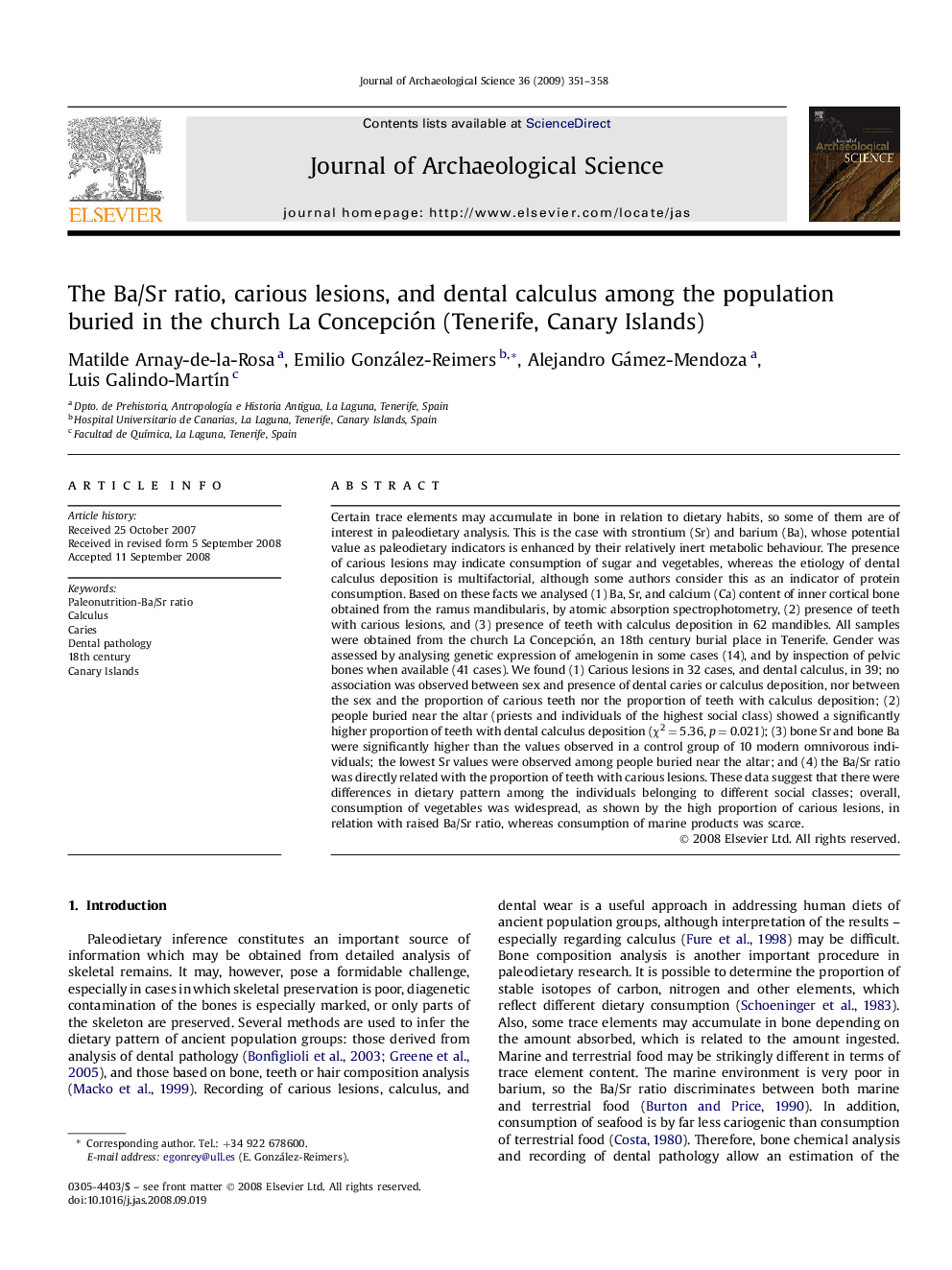| Article ID | Journal | Published Year | Pages | File Type |
|---|---|---|---|---|
| 1036246 | Journal of Archaeological Science | 2009 | 8 Pages |
Certain trace elements may accumulate in bone in relation to dietary habits, so some of them are of interest in paleodietary analysis. This is the case with strontium (Sr) and barium (Ba), whose potential value as paleodietary indicators is enhanced by their relatively inert metabolic behaviour. The presence of carious lesions may indicate consumption of sugar and vegetables, whereas the etiology of dental calculus deposition is multifactorial, although some authors consider this as an indicator of protein consumption. Based on these facts we analysed (1) Ba, Sr, and calcium (Ca) content of inner cortical bone obtained from the ramus mandibularis, by atomic absorption spectrophotometry, (2) presence of teeth with carious lesions, and (3) presence of teeth with calculus deposition in 62 mandibles. All samples were obtained from the church La Concepción, an 18th century burial place in Tenerife. Gender was assessed by analysing genetic expression of amelogenin in some cases (14), and by inspection of pelvic bones when available (41 cases). We found (1) Carious lesions in 32 cases, and dental calculus, in 39; no association was observed between sex and presence of dental caries or calculus deposition, nor between the sex and the proportion of carious teeth nor the proportion of teeth with calculus deposition; (2) people buried near the altar (priests and individuals of the highest social class) showed a significantly higher proportion of teeth with dental calculus deposition (χ2 = 5.36, p = 0.021); (3) bone Sr and bone Ba were significantly higher than the values observed in a control group of 10 modern omnivorous individuals; the lowest Sr values were observed among people buried near the altar; and (4) the Ba/Sr ratio was directly related with the proportion of teeth with carious lesions. These data suggest that there were differences in dietary pattern among the individuals belonging to different social classes; overall, consumption of vegetables was widespread, as shown by the high proportion of carious lesions, in relation with raised Ba/Sr ratio, whereas consumption of marine products was scarce.
